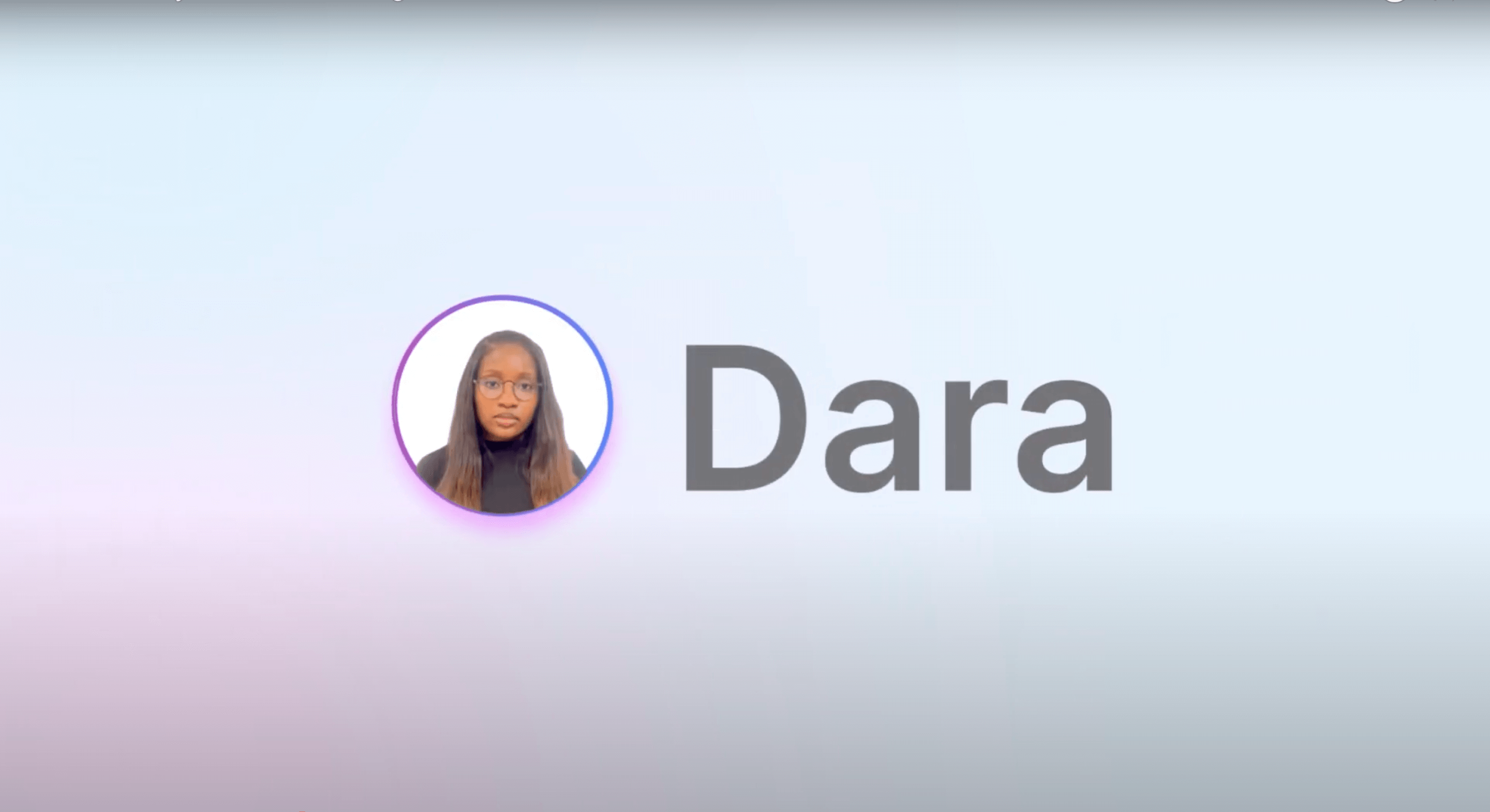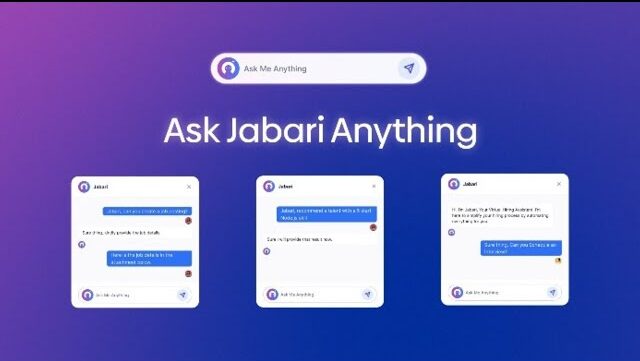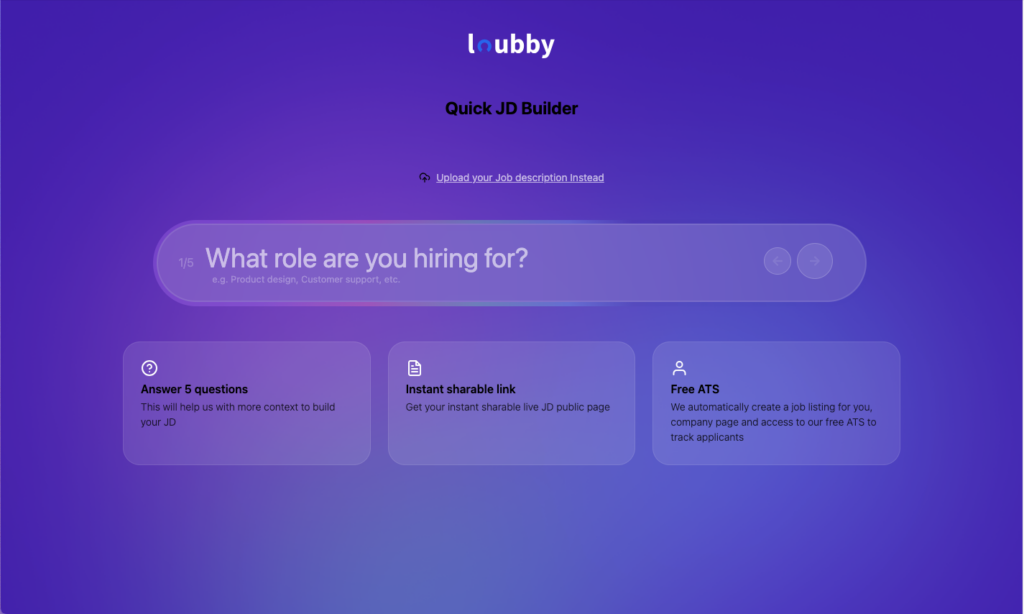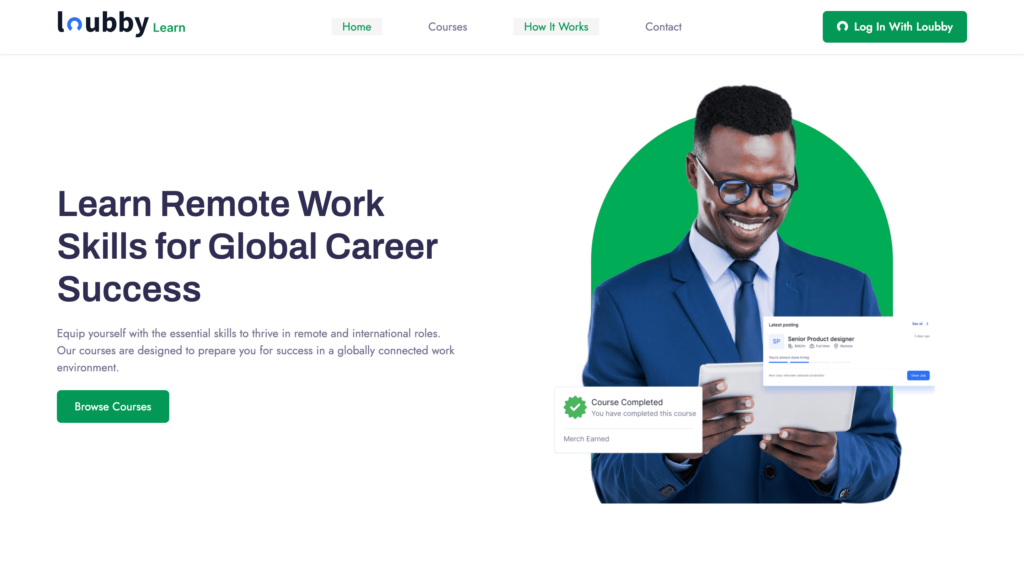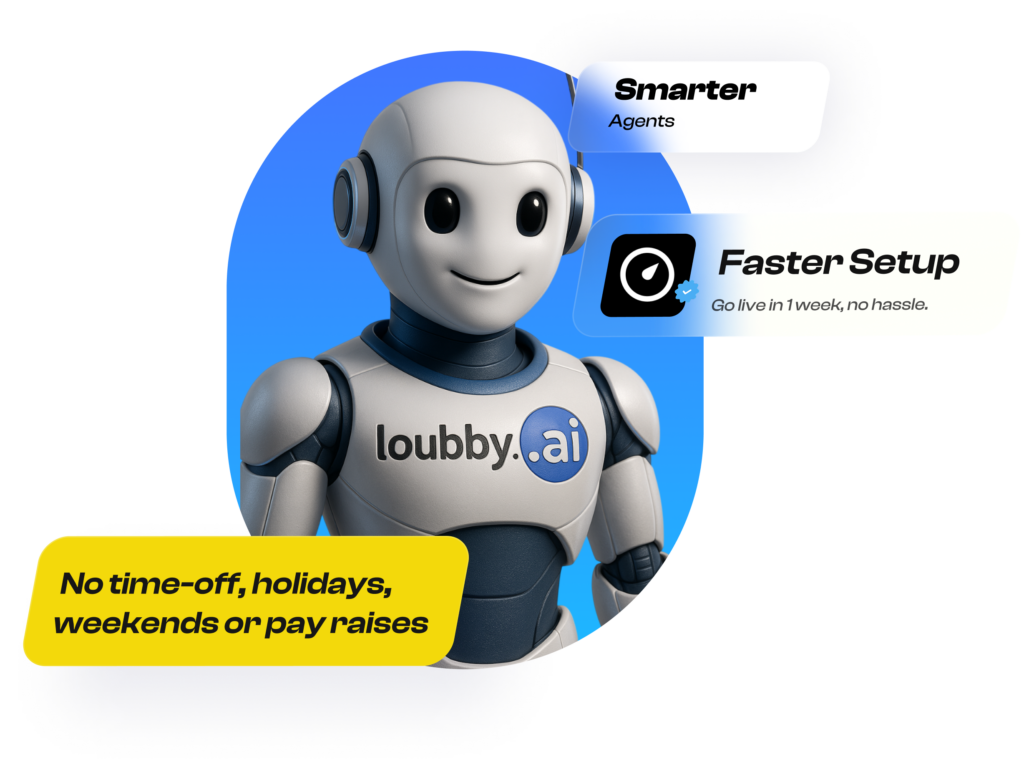Overview
In an increasingly competitive SaaS landscape, speed to lead and efficient outbound engagement are make-or-break for growing companies. This case study dives into how a mid-sized B2B SaaS company implemented Loubby AI’s AI-powered SDR solution and achieved a 175% increase in booked meetings and a 65% increase in revenue in just three months.
Company Background Our client, a U.S.-based SaaS firm specializing in cloud-based team collaboration tools for remote-first companies, had seen steady growth for three years but hit a wall in 2023. Despite a strong product and active user base, the company struggled to scale outbound sales without significantly increasing headcount and burn.
Their internal SDR team consisted of just three reps who were constantly overwhelmed. Each rep was responsible for lead sourcing, qualification, outreach, follow-ups, and booking meetings. Due to workload and inefficiencies in outreach, conversion rates stagnated and pipeline growth slowed dramatically.
Challenge The core challenges the company faced were:
- Difficulty in scaling outbound sales without increasing headcount.
- Low SDR productivity due to manual lead qualification and follow-up.
- Inconsistent follow-ups and delayed responses to inbound demo requests.
- Overreliance on generic sales sequences.
- Missed opportunities due to poor lead prioritization.
The leadership team explored hiring more SDRs but balked at the cost and long ramp-up time. That’s when they discovered Loubby AI.
Why Loubby AI? Loubby AI offered something unique: the ability to build and deploy no-code, AI-powered SDR agents in under a week capable of automating 95% of the sales development process. These agents could qualify leads, personalize outreach, schedule meetings, and even integrate with existing CRM and calendar systems.
What convinced the company’s VP of Sales was Loubby AI’s experience working with SaaS companies and its integration-ready infrastructure. Loubby AI built agents could tap into tools like HubSpot, Zapier, Slack, Google Calendar, Notion, and more—out of the box.
Implementation Process
Week 1: Discovery & Scope Definition The Loubby AI team hosted a discovery call with the client’s sales ops, SDR lead, and marketing manager. The goals were:
- Identify key workflows: inbound lead triage, outbound sequences, calendar scheduling.
- Understand lead scoring model.
- Audit CRM (HubSpot) and communication channels.
By the end of the week, Loubby delivered a detailed implementation plan outlining the AI SDR scope:
- Inbound lead triage and qualification.
- Personalized email outreach (3-sequence flow).
- Calendar-based meeting scheduling.
- Weekly performance summaries to the SDR team.
Week 2: Building the AI SDR Using Loubby’s internal AI workflow builder, the team developed a modular AI Employee composed of 4 agentic tasks:
- Lead Classifier Agent – Pulled leads from HubSpot, scored them using predefined rules and behavioral signals.
- Outreach Writer Agent – Used past high-converting emails to generate new outbound messaging with GPT-based personalization.
- Follow-up Automator Agent – Scheduled and sent follow-ups based on reply data and calendar availability.
- Scheduler Agent – Integrated directly with the company’s Google Calendar and HubSpot to automatically book meetings in available slots.
All agents were linked via Zapier and Make.com to ensure fluid communication between email, CRM, and calendar apps.
Week 3: Testing & Optimization Loubby ran a closed beta on 100 leads over five days. Key results:
- 43% email open rate (vs. 27% previously)
- 12% reply rate (up from 5%)
- 28 meetings booked (vs. 9 in a typical week)
Based on these results, minor adjustments were made to email tone and timing. The outreach agent was retrained to better match industry-specific language and include product-specific use cases.
Week 4: Full Deployment With performance validated, the AI SDR went live. The human SDRs were repositioned to focus on strategic accounts and demos, while the AI Employee handled:
- Lead sourcing
- Qualification
- Cold outreach
- Follow-ups
- Scheduling
The team received daily updates and could jump in for manual override at any point using Slack notifications.
Results After 3 Months The transformation was remarkable:
- 175% increase in booked meetings: From 117 to 322 over 90 days.
- 65% increase in revenue: Attributed to more demos and faster follow-up on high-intent leads.
- 80% reduction in manual outreach workload for human SDRs.
- 30% decrease in average lead-to-meeting time, accelerating sales velocity.
- $78,000 saved in projected SDR hiring costs.
The AI Employee became the company’s most efficient SDR—never sleeping, never missing a follow-up, and always available.
Key Takeaways
- AI SDRs aren’t just faster—they’re more consistent. Loubby’s agent followed up with 100% of qualified leads, compared to just 61% follow-up by humans in the previous quarter.
- Human SDRs became more strategic, focusing on enterprise opportunities and demo delivery.
- Integration with HubSpot and Google Calendar was seamless, eliminating the need for any major infrastructure changes.
Client Testimonial
“We were skeptical at first, but the results speak for themselves. Our sales team didn’t just get faster—they got smarter. Loubby AI gave us an edge we didn’t think was possible without doubling headcount.”
— VP of Sales, SaaS Client
Following the success of the AI SDR, the company has now commissioned a second AI Employee focused on post-demo onboarding and customer success. Their goal? A fully automated lead-to-renewal sales journey.
Loubby AI continues to support the client through monthly optimization calls and new feature rollouts, including sentiment analysis for lead quality tracking and automated enrichment via third-party APIs.
Conclusion This case study shows that AI Employees aren’t a distant future—they’re a competitive advantage today. In less than 30 days, Loubby AI turned a bottlenecked sales operation into a scalable engine of growth.
For any startup or scale-up looking to reduce CAC, accelerate pipeline movement, and scale without adding headcount—Loubby AI offers a battle-tested playbook.

